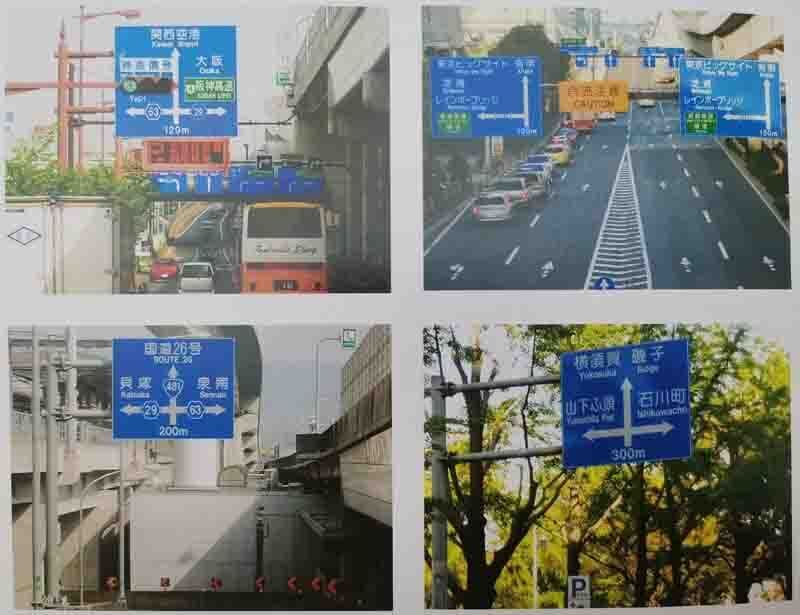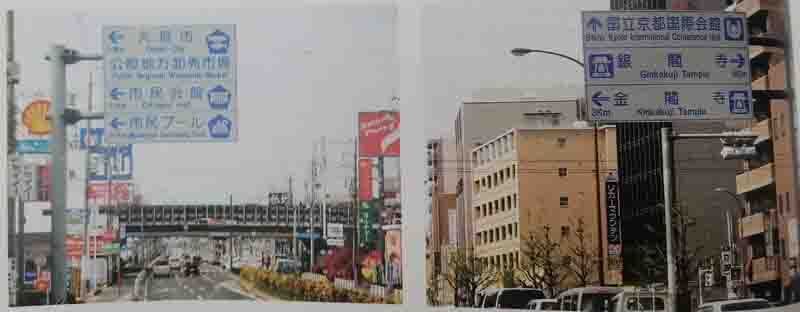Mingsheng Aluminum Sheet Home > faq > Aluminum Alloy > Japanese Highway Signs
Japanese Highway Signs
Author:Aluminum Sheeting for Trailers_Aluminum Trailer Siding Sheets_Mingsheng Aluminum Update time:2025-04-25 08:30:015. Application Examples of Wayfinding Signs
(1) Preview Point Sign
From the previous analysis, it can be seen that the preview point sign is a location and direction preview sign set in front of the intersection, which forewarns the driver that there is a road intersection in front of the driver and informs the travelling direction and the destination, so as to enable the driver to take measures such as slowing down and changing lanes in advance. Since the warning point sign is still some distance away from the intersection, it is necessary to mark the distance information under the arrow pattern on the sign face.

(2) Intersection sign
The intersection sign is set at an appropriate location in the inlet lane of the intersection, which is relatively close to the intersection, and the driver can already see the intersection clearly, so the sign no longer displays the distance information to the intersection. The intersection sign is a sign that must be installed at every road intersection, as shown in Figure 1-2-3-10 for each type of intersection sign. ( a ). ( b ) is a cross intersection: ( c ) is a T-shaped intersection; ( d ) is a deformed intersection. The indication information of the intersection sign includes place name, road name and road number, and the road number is set in the arrow pattern, and the top of the sign face shows the location information that can be reached in the forward direction: the two sides show the location information that can be reached by the intersecting roads, and the information of the transverse road that intersects with the current intersection is set in a polygonal box, and the transverse is shown in the bottom of the sign face, and it adopts the blue lettering in a white background to make a distinction; ( e ) for the intersection ( e ) is a combination of inlet lane indication and road information, with a separate sign over each inlet lane of the intersection, and the sign information content is the travelling direction of the lane as well as the information of the reachable location. In terms of colour, Japan's urban road wayfinding signs are white letters on a blue background, but white letters on a green background are used when previewing highways, which is basically the same as the domestic specification requirements.
(3) Location signs
Location signs in Japan mainly indicate the boundaries of cities, towns and prefectures, as well as famous and major locations passed along the route. Location signs are generally set up separately, with blue characters on a white background, and can be accompanied by a special logo pattern, which is distinctly different from the wayfinding signs that guide the route.

2.3.2 Highway wayfinding signs
Japan started to build motorways as early as 1957, and the first motorway was opened in 1963, the 190-km Meishin Expressway connecting Nagoya and Kobe, and the first phase of the project connecting Kurihigashi Town in Shiga Prefecture and Amagasaki City in Hyogo Prefecture, which was 71 km long, was first opened. Since then, motorways were constructed one after another across the country, and five major trunk lines connecting Tokyo to Kobe were opened in 1969, forming a national network connecting Tokyo and the Hanshin area. In 1969, the Tokyo-Kobe Expressway was opened, followed by the construction of five major trunk routes running north-south, connecting with the existing motorways in Tokyo, Nagoya and the Hanshin area, and forming the backbone of the national motorway network. Japan plans to build a highly developed motorway network with a total length of 11.52 million km within 20 years. Japan's highway wayfinding sign system is very perfect, with a high degree of information technology. Static signs and dynamic signs on the road are coordinately combined to provide road users with a large amount of timely, accurate and necessary traffic information. In Japan, the colour of highway signs is white letters on a green background, but there are also some airport highways that use white letters on a blue background. The following is a detailed description of the types of directional signs and their installation on Japanese motorways.
1. Classification of Wayfinding Signs
(1) Location Signs
(2) Entrance Advance Signs
(3) Location Distance Signs
(4) Lane Indication Signs
(5) Location Direction Signs
(6) Exit Advance Signs
(7) Exit Direction Signs
(8) Service Facility Signs
2. Examples of the application of wayfinding signs
The wayfinding signs on Japanese motorways are carefully classified and each type has a variety of expressions, so that reasonable choices can be made according to the actual situation on the site when designing. The following is an example of the Meishin Expressway and the Kansai International Airport Expressway (KAI) to introduce the installation of important types of wayfinding signs and the characteristics of their use.
(1) Installation of wayfinding signs in front of interchange exits
In Japan, three exit advance warning signs and two exit directional signs are generally installed in front of interchange exits on motorways. These wayfinding signs play a key role in guiding traffic flow and are the most important types of signs on motorways, and they are installed as follows:
1) Exit Advance Warning Signs
Exit Advance Warning Signs are installed at points 2km.1km. from the exit bifurcation point respectively, 500m from the exit diversion point. Two of the warning signs at Exit 25 of the Meishin Expressway,
( a ) is a 2km warning sign, which is characterised by the use of a concise vertical traffic pattern that clearly informs drivers of the two diversions after entering the exit ramp to the Nagoya Expressway and National Route 22 respectively.
( b ) is a 1km sign, which combines the information of the two directions of the exit ramp on the basis of the previous sign, and is a commonly used sign format. This is a common format. As in China, if the name of a motorway appears on the sign, green characters on a white background are usually used to form a contrasting effect.
(2) Exit indication sign
The exit indication sign is relatively close to the exit, so the distance information is no longer marked on the sign face, and its focus is to clearly indicate the driving direction of the ramp exit. For the two exit signs at Exit 24 of Meishin Expressway,
( a ) is set near the starting point of the exit deceleration lane, which suggests that the exit vehicles need to drive away from the main line into the widened deceleration lane;
( b ) is set at the triangular end of the exit bifurcation, which highlights the point as the exit location, and indicates the direction of the exit travelling direction with the inclined upward arrow. In addition, where available, an additional sign may be placed next to the exit sign to simultaneously display information on the direction of travel on the mainline ahead.
Article Categories
New Article
Contact Us
Contact:Maddy
Add:No. 162 Jinbai Road, Zhengzhou City, Henan Province, China
